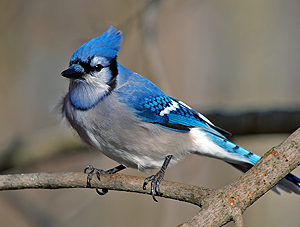 Corvids, as members of the family are called include ravens, magpies, and nutcrackers as well as crows and jays. They are large, highly intelligent, unafraid of humans, and have stout beaks, strong legs and feet, and a large wingspread. There is at least one species of this family in every part of the United States with the western part of the country especially well endowed. Corvids tend to like trees or brush but enjoy daily visits to backyards. Conifers are popular with most of the corvids for both the food and nesting sites they provide, but many corvids can find less apealing habitats satisfactory. With their stout beaks, corvids are omnivores and eat nuts, fruits, seeds, insects, small animals such as snails and frogs. Blue jays and crows are sometimes guilty of nest robbing. As unpleasant as this habit might be, jays are also known for their alarm calls when danger threatens so are also a positive force in the life of other birds.
Corvids, as members of the family are called include ravens, magpies, and nutcrackers as well as crows and jays. They are large, highly intelligent, unafraid of humans, and have stout beaks, strong legs and feet, and a large wingspread. There is at least one species of this family in every part of the United States with the western part of the country especially well endowed. Corvids tend to like trees or brush but enjoy daily visits to backyards. Conifers are popular with most of the corvids for both the food and nesting sites they provide, but many corvids can find less apealing habitats satisfactory. With their stout beaks, corvids are omnivores and eat nuts, fruits, seeds, insects, small animals such as snails and frogs. Blue jays and crows are sometimes guilty of nest robbing. As unpleasant as this habit might be, jays are also known for their alarm calls when danger threatens so are also a positive force in the life of other birds.
Here are some plants that are sure to attract the crows and jays in your area.
 Fir (Abies) and Douglas Fir (Pseudotsuga menziesii)
Fir (Abies) and Douglas Fir (Pseudotsuga menziesii)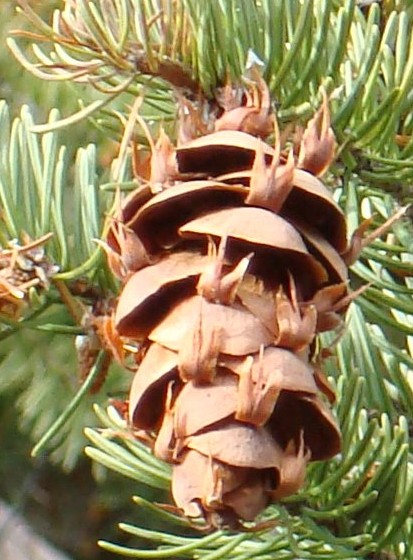 These evergreen conifers have short needles, dense branches, and numerous cones as they mature. Both the seeds from the cones and the insects from the bark attract nuthatches. Kinglets and bustits eat insects from the foliage and many birds enjoy the trees as cover or for roosting.
These evergreen conifers have short needles, dense branches, and numerous cones as they mature. Both the seeds from the cones and the insects from the bark attract nuthatches. Kinglets and bustits eat insects from the foliage and many birds enjoy the trees as cover or for roosting.
-
Size: To 100′ H
Site: Full sun and medium moist, well-drained soil
Hardiness: Zones 3-8 depending on the species and cultivar
 Pine (Pinus spp)
Pine (Pinus spp)
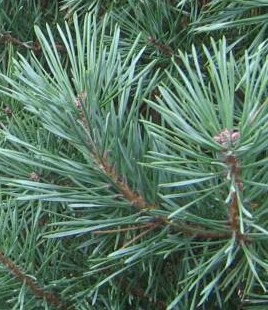 There are many pine species so find ones that grow well in your area. Try to find one that is relativey open and produces a lot of cones. Corvids like the trees for nesting sites and will eat the seeds from the cones and insects from the bark and twigs. Many other birds use the trees for a night time roost; nuthatches, chickadees, and titmice like the seeds, and kinglets eat the insects from the needles.
There are many pine species so find ones that grow well in your area. Try to find one that is relativey open and produces a lot of cones. Corvids like the trees for nesting sites and will eat the seeds from the cones and insects from the bark and twigs. Many other birds use the trees for a night time roost; nuthatches, chickadees, and titmice like the seeds, and kinglets eat the insects from the needles.
-
Size: 25-100′ H depending on the species
Site: Full sun to part shade; average, moist to dry, well-drained soil; (depending on the species)
Hardiness: Zones 3-10 depending on the species
 Oak (Quercus spp. and cultivars)
Oak (Quercus spp. and cultivars)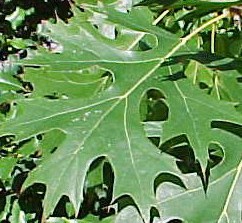 Although slow growing, these large deciduous trees are a good source of food and nest sites for corvids. The acorns are especially enjoyed by corvids as well as many other birds such as woodpeckers, chickadees, titmice, doves, and small finches. The insects on the foliage and around the flowers are attractive to birds such as tanagers, orioles, vireos, warblers, and flycatchers. If you have a choice, choose red oak for its very tasty acorns.
Although slow growing, these large deciduous trees are a good source of food and nest sites for corvids. The acorns are especially enjoyed by corvids as well as many other birds such as woodpeckers, chickadees, titmice, doves, and small finches. The insects on the foliage and around the flowers are attractive to birds such as tanagers, orioles, vireos, warblers, and flycatchers. If you have a choice, choose red oak for its very tasty acorns.
-
Size: 80-100′ H
Site: Full sun; medium moist to dry, well-drained soil; (depending on the species)
Hardiness: Zones 4-10 dependin on the species
 Pecan (Carya illinoensis)
Pecan (Carya illinoensis)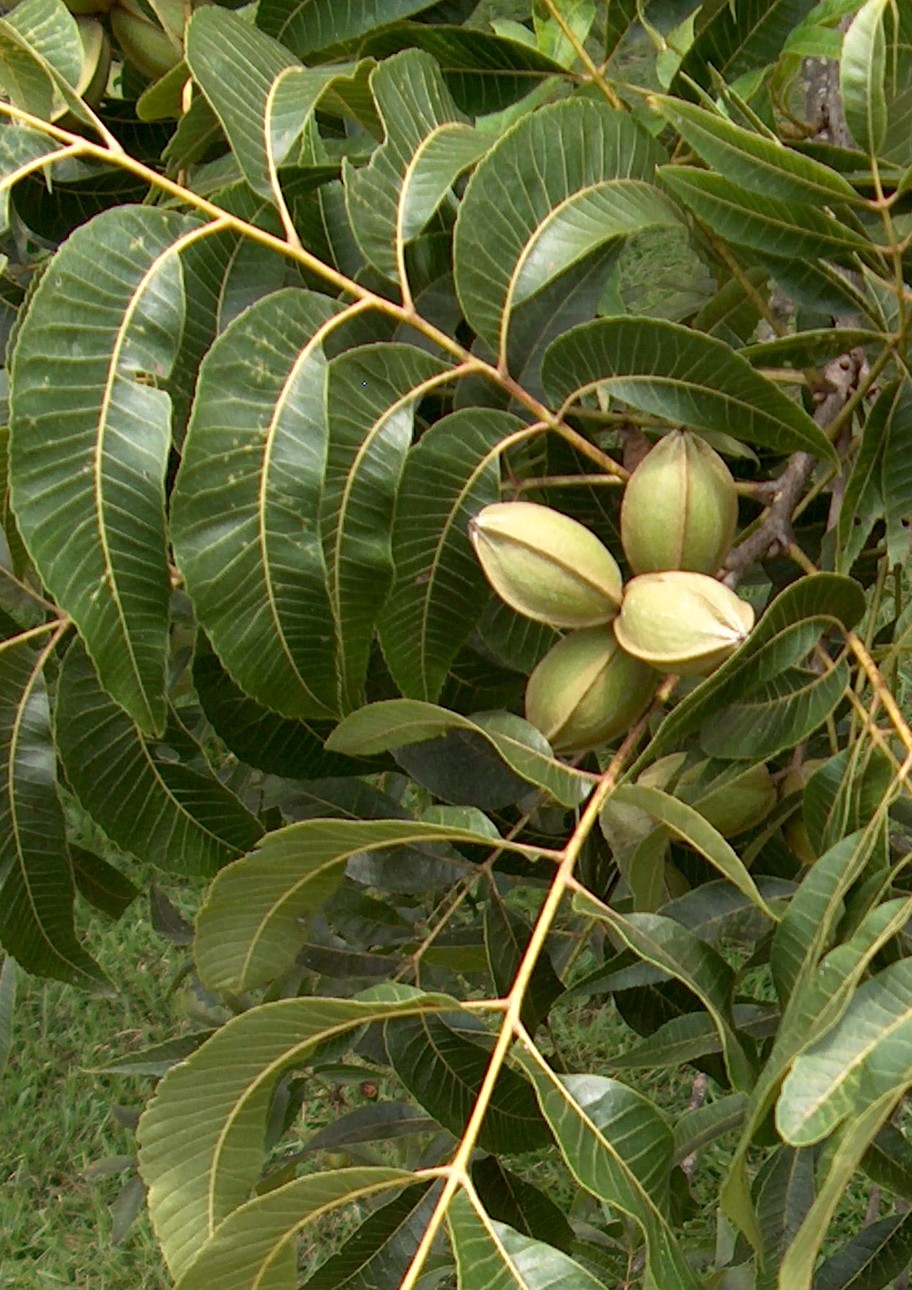 These large deciduous trees are considered the best nut trees for attracting birds including corvids. Unfortunately, however, they take a long time to mature and produce nuts. If you can’t wait, try hazelnuts/filberts as they are shrubs and bear nuts quickly.
These large deciduous trees are considered the best nut trees for attracting birds including corvids. Unfortunately, however, they take a long time to mature and produce nuts. If you can’t wait, try hazelnuts/filberts as they are shrubs and bear nuts quickly.
-
Size: Up to 100′ H
Site: Full sun; rich, moist, well-drained soil
Hardiness: Zones 6-9
 Annual Sunflower (Helianthus annuus)
Annual Sunflower (Helianthus annuus)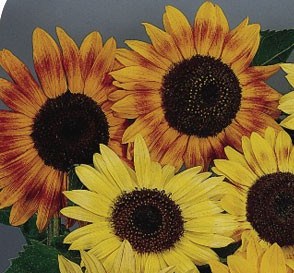 The single large-headed sunflower in shades of gold and red are attractive in the garden and sure to attract corvids as well as many other birds such as chickadees and nuthatches looking for seeds. Wrens, chickadees, and warblers are attracted to the insects around the flowers and hummingbirds may come for the nectar. Sunflowers are easily grown for seed.
The single large-headed sunflower in shades of gold and red are attractive in the garden and sure to attract corvids as well as many other birds such as chickadees and nuthatches looking for seeds. Wrens, chickadees, and warblers are attracted to the insects around the flowers and hummingbirds may come for the nectar. Sunflowers are easily grown for seed.
-
Size: 4-8′ H
Site: Full sun; average, moist, well-drained soil
Hardiness: 4-8
 Corn (Zea mays)
Corn (Zea mays)
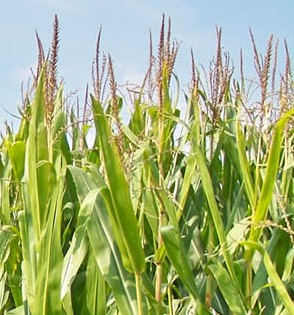 Corn is fast-growing and will provide kernals for corvids as well as other birds and mammals but don’t expect to get a lot for yourself if these other animals are around. Birds like corvids, woodpeckers, cardinals, and redwinged blackbirds will eat the kernals off the cob while birds like turkeys and pheasants will eat the kernals on the ground. Plant seeds in a group to facilitate fertilization and maximum kernal production.
Corn is fast-growing and will provide kernals for corvids as well as other birds and mammals but don’t expect to get a lot for yourself if these other animals are around. Birds like corvids, woodpeckers, cardinals, and redwinged blackbirds will eat the kernals off the cob while birds like turkeys and pheasants will eat the kernals on the ground. Plant seeds in a group to facilitate fertilization and maximum kernal production.
-
Size: 4-8′ H
Site: Full sun; fertile, medium moist, well-drained soil
Hardiness: Annual

Jay photo from Wikipedia Commons